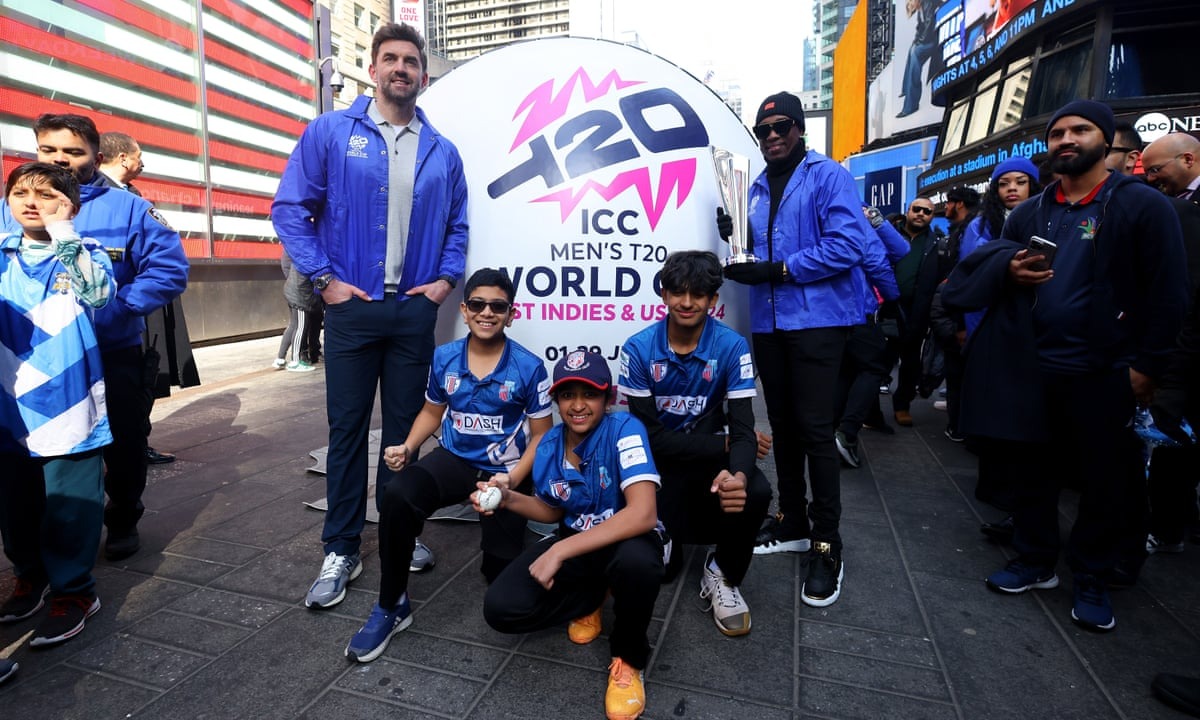The men’s T20 World Cup, which comes to life in Dallas on Saturday night, spans six Caribbean countries and the United States of America, where some believe gold can be found in the Thar Hills, and is possibly the most ambitious world event in cricket.
It certainly feels the most comprehensive of all formats, whether male or female. A record number of 20 teams will start in four groups of five – no preliminary qualification here – and the USA, Canada and Uganda are among the nine associated nations for the first time. Then there’s the logistics, be it the zig-zag tour operators working with seven different governments-or the mind-boggling 34,000-seat modular stadium in Long Island, New York, which was quickly assembled like an Ikea flatpack on steroids.

Nassau County International cricket Stadium, to give its full name, will host the biggest match of all – a central pillar of the International Cricket Council’s broadcasting deal – when India face Pakistan in Group A next Sunday. It is one of three fields used in the USA, where 16 out of 55 matches will take place. They all get to the first round before the Caribbean takes control. But even if it’s not a full-fledged bugle call on American soil, cricket is finally scratching its obvious itch of fate.
And who knows, maybe this ninth edition of the tournament, formerly known as World T20, will finally consolidate its primacy. Given the unstoppable proliferation of Twenty20 cricket in recent years and the questions about the future of his over-50s siblings at the more exclusive 10-team World Cup in India six months ago, it’s only a matter of time before the T20 World Cup becomes the more exclusive 10-team World Cup.

The answer to this may still be a little far away, it must be said that two more men’s over-50 World Cups will be sold to broadcasters by 2031, and this format is still the scene where red and white ball cricket stars come together and demonstrate their skills. And it may also depend on whether the next four weeks are successful or not, when a mixture of the sport’s great traditional animals and its optimistic outsiders compete on both sides of the Caribbean Sea. At least on paper, this one seems ripe for a certain harmful.
That, of course, comes with the territory, with T20 being the most moody and volatile format in the sport; a game where only one or two heroes can bend the script at will every day. But while this is regularly seen in the T20 leagues now Overflowing the schedule – the Indian Premier League’s ticker only recently settled after last week’s final- national pride, rivalries and the tantalising prospect of great kills mean that a World Cup is touching the parts the franchise world can’t.

Can Rohit sharma’s India get rid of the fatigue of this two-month IPL and show that the final defeat of over 50 years in Ahmedabad last November was just a meat health issue? Perhaps, spurred on by the return of Jofra Archer, England will be able to defend its title this time, having so obediently given up this international crown one day. It goes without saying that no team wants to compete against Australia at the very end, its big-game mentality so enviable and its team full of champions.
However, the field is much wider than the so-called Big Three, all of which could still be as big. A personal tip is the West Indies, blessed with home-lawful advantage and strong batsmen, and should be fueled by an exhilarating soca atmosphere in the stands, while teams like Pakistan, who finished second and New Zealand, regulars of the knockout stage, can never be ruled out. South Africa also seems to have all the tools. But each group has a third, maybe even a fourth side, which could still take one of the first two places leading into the rapid-fire super eight phase (that is, two more groups of four that determine the semifinals).
It is unlikely that the question of whether cricket can make America crack will be answered according to cliche (especially on a subscription channel, Willow TV), although this T20 World Cup is not a one-time moonstrike, but a shoulder to the wheel of a wider push. In addition to T20 cricket, which will debut at the Olympic Games in Los Angeles, there is already the young Major Cricket League. It has owners with deep pockets (four of the six teams are IPL satellites) and, according to Andy Bull’s attention-grabbing report in the Guardian earlier this week, it has ambitions to expand rapidly in the coming years.

